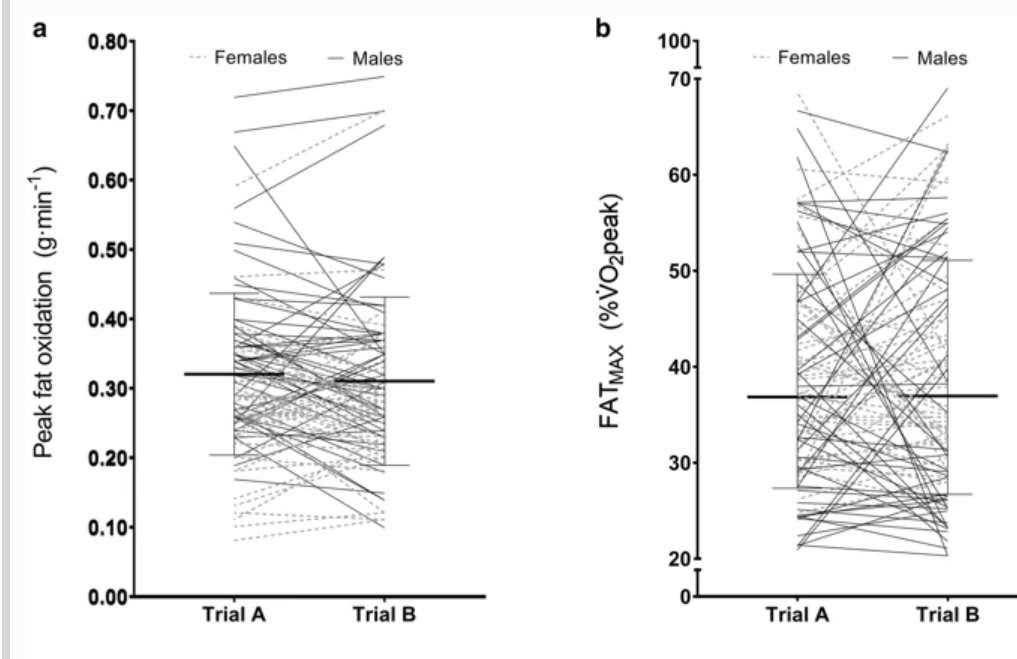The day-to-day reliability of peak fat oxidation and FATMAX
Oliver J. Chrzanowski-Smith, European Journal of Applied Physiology volume 120, pages1745–1759(2020)
Purpose
Prior studies exploring the reliability of peak fat oxidation (PFO) and the intensity that elicits PFO (FATMAX) are often limited by small samples. This study characterised the reliability of PFO and FATMAX in a large cohort of healthy men and women.
Methods
Ninety-nine adults [49 women; age: 35 (11) years; V˙O2peak: 42.2 (10.3) mL·kg BM−1·min−1; mean (SD)] completed two identical exercise tests (7–28 days apart) to determine PFO (g·min−1) and FATMAX (%V˙O2peak) by indirect calorimetry. Systematic bias and the absolute and relative reliability of PFO and FATMAX were explored in the whole sample and sub-categories of: cardiorespiratory fitness, biological sex, objectively measured physical activity levels, fat mass index (derived by dual-energy X-ray absorptiometry) and menstrual cycle status.
Results
No systematic bias in PFO or FATMAX was found between exercise tests in the entire sample (− 0.01 g·min−1 and 0%V˙O2peak, respectively; p > 0.05). Absolute reliability was poor [within-subject coefficient of variation: 21% and 26%; typical errors: ± 0.06 g·min−1 and × / ÷ 1.26%V˙O2peak; 95% limits of agreement: ± 0.17 g·min−1 and × / ÷ 1.90%V˙O2peak, respectively), despite high (r = 0.75) and moderate (r = 0.45) relative reliability for PFO and FATMAX, respectively. These findings were consistent across all sub-groups.
Conclusion
Repeated assessments are required to more accurately determine PFO and FATMAX.














